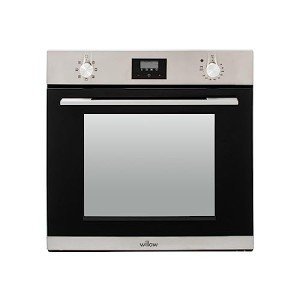The Rise of Built-In Ovens: A Seamless Approach to Modern Cooking
In contemporary kitchen areas, where style aesthetics blend flawlessly with performance, one device sticks out as a true game changer: the built-in oven. As house owners and chefs alike continue to seek innovative options that enhance their cooking experience, built-in ovens have become increasingly popular. This short article checks out the advantages, considerations, and patterns surrounding built-in ovens, highlighting why they are a necessary feature in modern cooking spaces.
What is a Built-In Oven?
A built-in oven is a kitchen appliance designed to be integrated into the kitchen cabinetry of a kitchen area instead of standing alone. Unlike standard freestanding ovens, which can be moved and positioned anywhere, built-in ovens come in different styles and sizes to fit specifically within designated spaces. Available in single or double setups, these ovens offer a structured appearance that matches modern-day cooking area styles.
Benefits of Built-In Ovens
1. Space-Saving Design
One of the most enticing advantages of built-in ovens is their space-saving style. By incorporating the oven into cabinets, you can maximize valuable counter and flooring area. This is especially helpful in smaller kitchen areas, where optimizing room is vital. Built-in ovens can be installed at eye level, making them more accessible and reducing the requirement to bend down.

2. Visual Appeal
Built-in ovens contribute to a smooth and cohesive kitchen area design. Offered in numerous surfaces-- such as stainless steel, black, white, and custom-made cabinets-- they can blend perfectly into the general design. This visual appeal improves the cooking area's visual harmony and elevates the space, developing a contemporary and sophisticated environment.
3. Boosted Functionality
Numerous built-in ovens come geared up with sophisticated cooking technologies, such as convection cooking, steam ovens, and clever features. These improvements permit for flexible cooking alternatives, making it simpler to attain professional-level outcomes in the house. Smart built-in ovens can even connect to Wi-Fi, allowing users to manage the oven from another location, receive notifications, and gain access to a variety of cooking programs and recipes.
4. Improved Ovens & Hobs
Since built-in ovens can be integrated with kitchen hoods and ventilation systems, they can help keep better air quality and reduce cooking odors. This is especially substantial for those who love to cook with fragrant spices and active ingredients, as a reliable ventilation system can keep the kitchen area comfortable and welcoming.
5. Modification Options
Built-in ovens provide a large range of customization options to fit specific cooking designs and requirements. From professional-grade appliances with several cooking modes to compact designs for smaller sized kitchens, property owners can choose the oven that fits their particular requirements. Numerous makers also offer adjustable front panels, enabling you to match the oven's look to your cabinets for a really merged look.
Factors to consider When Choosing a Built-In Oven
While built-in ovens have many benefits, there are crucial factors to consider to keep in mind before purchasing:
1. Price
Built-in ovens usually include a higher price than their freestanding equivalents due to their style and setup requirements. It's crucial to consider both the cost of the oven and any extra costs associated with cabinets adjustments or installation.
2. Setup Requirements
Installing a built-in oven frequently needs expert help, particularly if you need to modify existing cabinets. Guarantee that you consider any expenses associated with installation, consisting of labor and prospective cabinetry changes.
3. Size and Dimensions
Before buying a built-in oven, measure the designated space accurately to ensure a proper fit. Built-in ovens can be found in various sizes and setups, so selecting one that aligns with your needs and kitchen area design is essential.
4. Lifestyle and Usage
Consider your cooking practices and requires when choosing a built-in oven. If you frequently host large events, a double oven may be more beneficial. On the other hand, if you have a compact kitchen area, a single-wall oven may be adequate.
Trends in Built-In Ovens
The kitchen device market is continually evolving, and built-in ovens are not exempt from emerging patterns. Some present trends consist of:
Smart Technology Integration: With the rise of clever home innovation, built-in ovens now frequently feature connectivity choices. This permits users to monitor cooking progress and adjust settings through mobile apps.
Energy Efficiency: As sustainability becomes a top priority, lots of makers are buying energy-efficient built-in ovens that decrease energy consumption while preserving efficiency.
Multi-functional Designs: Built-in ovens now provide functions such as air frying, sluggish cooking, and steaming, supplying versatility that meets a large range of cooking techniques.
Conclusion
Built-in ovens undoubtedly represent a perfect blend of design, function, and convenience in today's cooking areas. As more homeowners go with this modern-day service, the focus moves to creating a cooking area that is as visually pleasing as it is useful. Whether you are developing a brand-new home or remodeling your kitchen area, thinking about a built-in oven could raise your culinary experience and transform your kitchen into an elegant and functional sanctuary. With a variety of alternatives readily available and continuous innovations in technology, built-in ovens stay a standout choice for both beginner cooks and culinary lovers alike.
